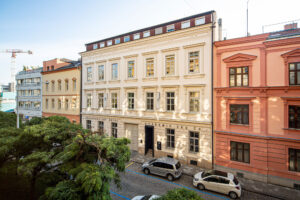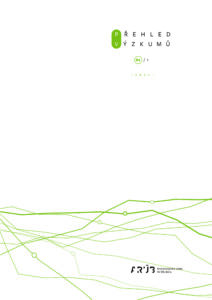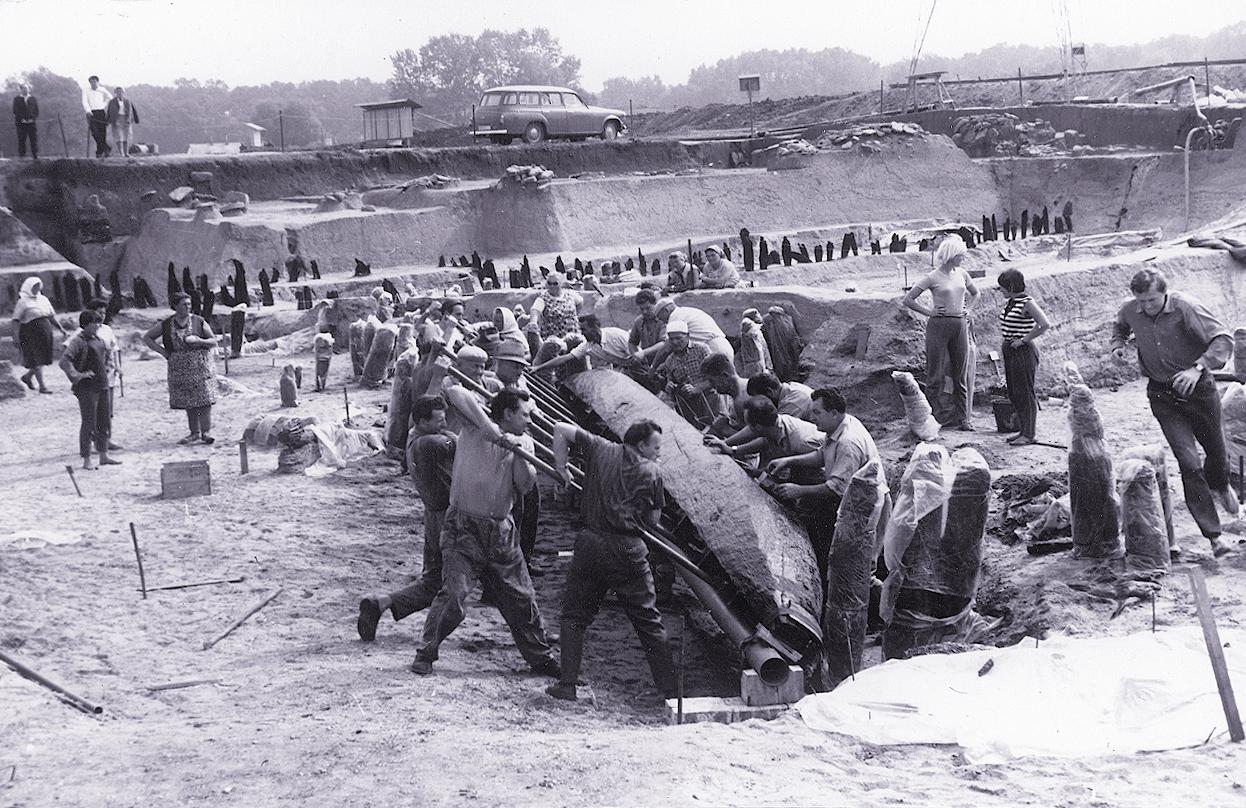Research Centre for the Roman Period and the Migration Period
Our knowledge is based on the research and findings accumulated by generations of scholars. Our team utilises the latest research methods to model an enhanced image of how the Germanic peoples in the Roman Period lived in this country, their relations with their neighbours, warfare with the Roman Empire, and how the tribes moved across this land in the Migration Period.
The Roman military base at Hradisko near Mušov is a key research site into the complex and unique traces that the Roman army left deep in its enemy territory. Important grave and settlement finds of the local Germanic peoples in the immediate vicinity are used to study the complicated relationships of these cultural units. We also attempt to answer the questions: Did the Romans intervene in the structure of the leading Germanic elites? Did the Roman presence influence the spiritual and material world of the Germanic tribes? Was it merely a military campaign, or did the Roman armies plan to settle permanently in this territory?
An extensive burial site of the Lombards, a tribe that temporarily settled in this land on their journey from German territory via Pannonia to Italy, is still under examination at the Mušov-Roviny site. Isotope and genetic analyses of the skeletal remains discovered there provide a glimpse into the dynamics of the migration streams during the Migration Period. Besides detailed knowledge of their equipment, arms and clothing, we search for evidence suggesting which part of the population was mobile and which was settled. Were the whole tribes on the move, or did only the elites and their military retinues migrate?
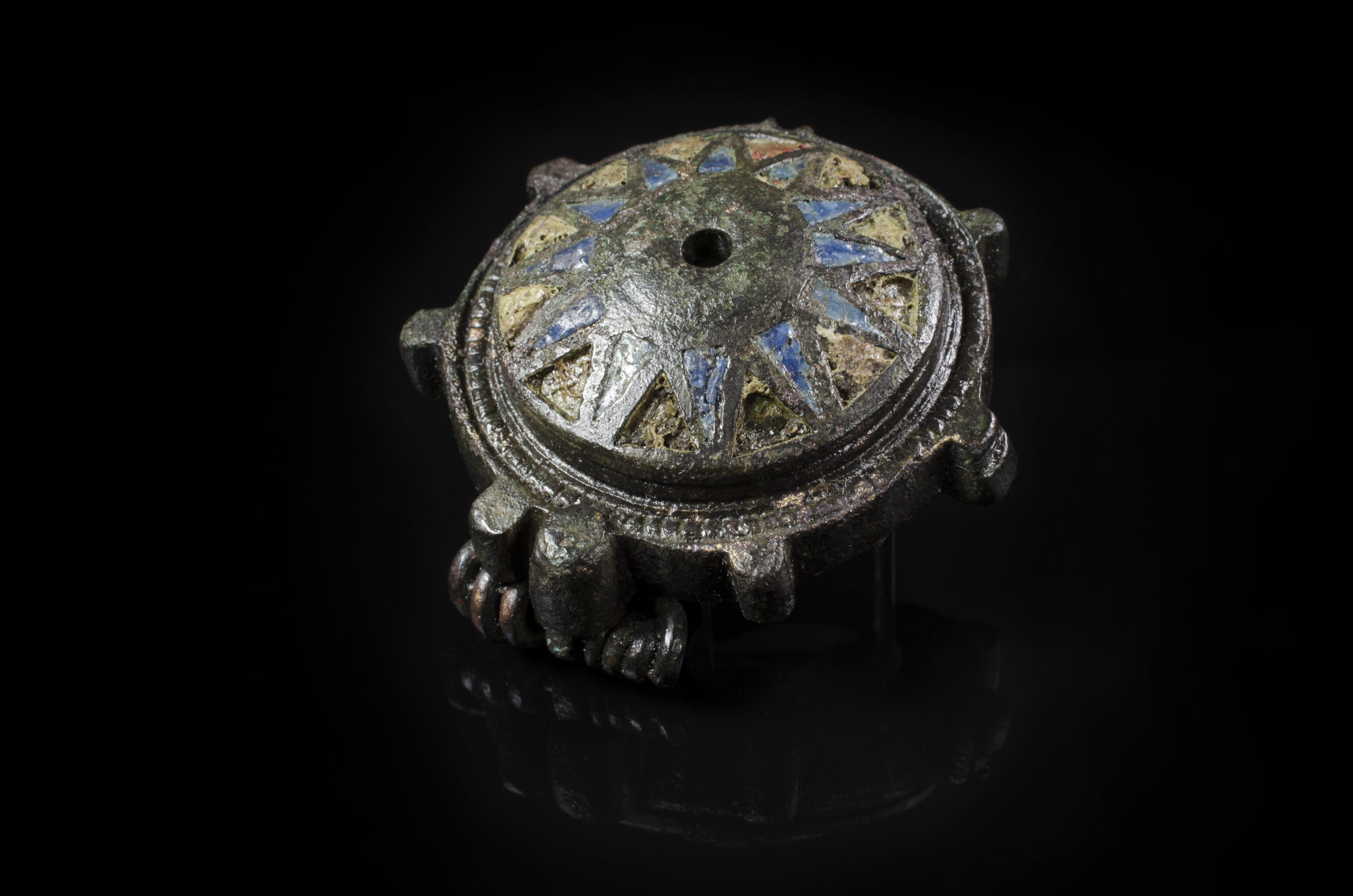
Interpreting relationships and clashes between Roman civilization and Germanic tribes in our territory
Roman bronze fibula decorated with enamel from Mušov. Photo: P. Růžičková
Facts
Establishment of the centre
1995
Head of the research centre
Mgr. Marek Vlach, Ph.D.
Head of the base
Mgr. Jana Apiar, PhD.
Researchers and specialists
Mgr. Jana Apiar, PhD., Mgr. Peter Apiar, Mgr. David Cibulka, Mgr. Zuzana Loskotová, Ph.D., Mgr. Pavla Růžičková, Mgr. Stanislav Sofka, Mgr. Alina Szabová, Mgr. Marek Vlach, Ph.D., Mgr. Michaela Zelíková
Mission
The centre undertakes enduring research into the Roman and Migration Periods. This is anchored in an international network of cooperation and devotes its attention to selected cultural-historical, chronological and technological questions inherent to the given periods. Besides an enduring interest in the interactions between the Germanic and the ancient Roman worlds, the centre examines the changing circumstances of the migrating tribes. Rescue excavations are a considerable part of the centre’s activities and are representative of the regions and periods in the team’s scientific profile. The centre’s team makes intensive use of its position, based on the tradition of the past decades, as one of the main centres for the research of protohistory in the Czech Republic and Central Europe. It has continued to moderate and interconnect research workplaces, and actively organises international conferences. The centre actively focuses on the current social challenges to protohistoric archaeology, primarily detector prospections and citizen science. The popular and attractive presentation of the results of our scientific work for the general public is also an important activity of the centre. The Mušov Visitors’ Centre – A Gateway to the Roman Empire, represents an extraordinary forum for the permanent presentation and popularisation of the results.
We present the results of scientific activities in an attractive form to the general public
Romans at Mušov – a scene from a film shown at the Mušov Visitors’ Centre – A Gateway to the Roman Empire. Photo: P. Růžičková, 2019
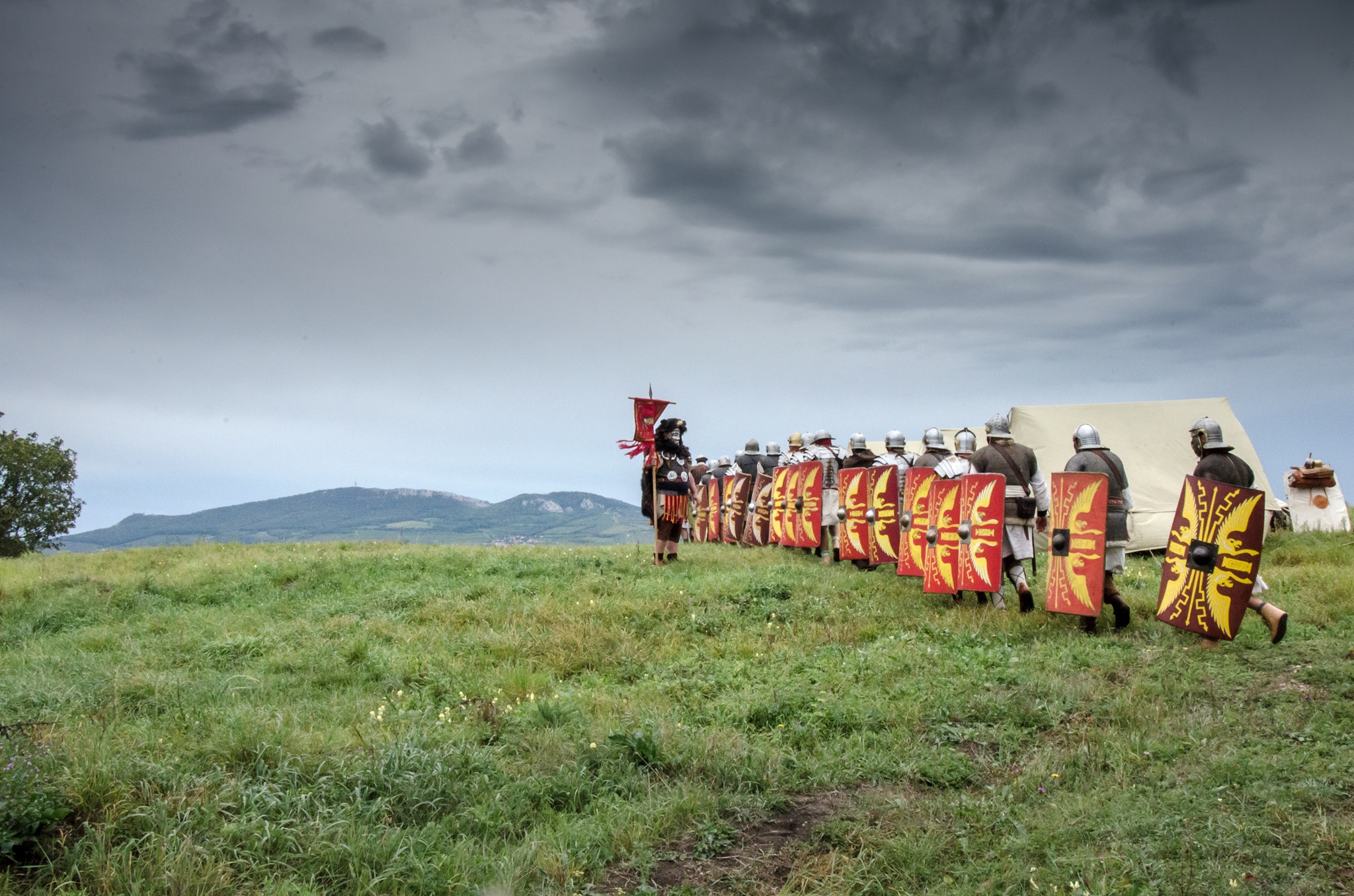
Main subject areas
Roman Period
The strong focus on the Roman-Germanic military confrontations (especially during the Marcomannic Wars of AD 172–180), is because the territory of southern Moravia and the neighbouring regions provide a unique source base to address archaeological and historical questions with an extraordinarily broad pan-European international impact. It is an important subject area in which Czech archaeology is established within the framework of the Roman-provincial and Limes Romanus archaeology implemented across the continent. This thematic focus also generates a wide network of national and international contacts and collaborations around the research team. Fieldwork and theoretic research concentrate on the study of the Roman fortress at Hradisko near Mušov, on the systematic research of the short-term Roman camps and the detailed analyses of the Roman army’s material culture, subsistence and strategy in our territory.
Within the subject area of the Roman Period, the team also focuses on the issues of the development of Germanic society, examining it through the individual categories of the archaeological record (especially settlements) and by using large datasets within computer agent modelling.
Migration Period
The centre gathers, processes and evaluates the archaeological record to answer the complex questions of settlement continuity and discontinuity and the ethnic-cultural identities of the Migration Period, i.e., the period between the late 4th century and the second half of the 6th century, in a wider Central European context of large migration movements. The priority interest is on the later, Lombard phase of this epoch. The archaeological record from the territory of Moravia represents an extraordinarily important link in a chain of archaeological traces left behind by the Lombards during their migration from the north of Europe to Italy. The extensive necropoleis and material, the subject of long-term examination by the team, provides a large number of key records that enable traditional archaeological and new complex bioarchaeological research with the considerable involvement of international collaborations.
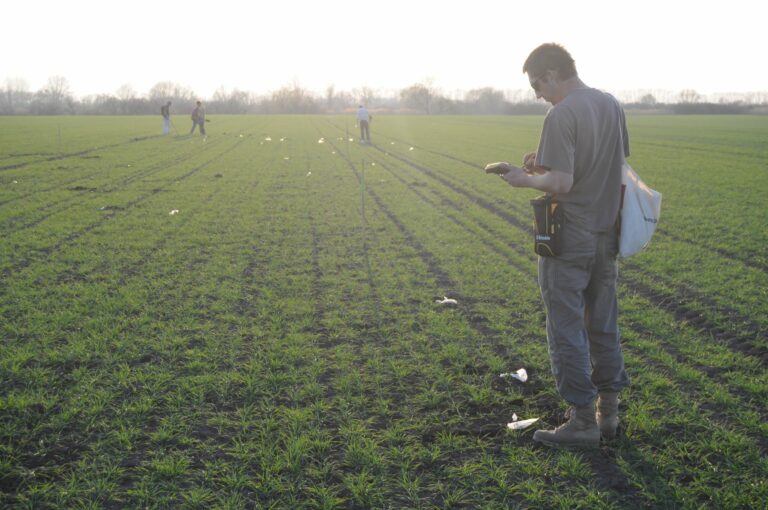
We actively address current social challenges, especially regarding detector prospections and citizen science
Fieldwalking with the use of metal detectors. Photo: ARÚB archive
Research base
Dolní Dunajovice – Mušov
Website: www.archeologiemusov.cz/en/
Established in 1981 and used by the centre for research activities, the research base in Dolní Dunajovice was tasked with rescuing archaeological monuments endangered by the construction of the Nové Mlýny Reservoirs. Since 1986, it has become a specialised workplace focusing on the excavations of sites from the Roman and Migration Periods. The workplace acquired its own building in Dolní Dunajovice in 1999. After reconstruction, it now provides the facilities needed for cutting-edge scientific work in this discipline. Archaeologists, specialists and research technicians working at this branch of the institute concentrate on fieldwork, process the acquired archaeological material and participate in the rescue of monuments endangered by building activities in the region.
Read more
- Mušov Visitors’ Centre – A Gateway to the Roman Empire: https://www.branadorimskerise.cz/en/
- Website: https://www.archeologiemusov.cz/en/

